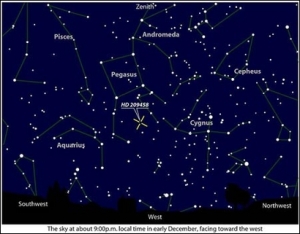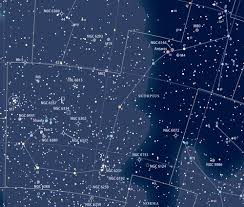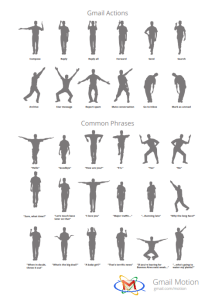What are constellations?



A constellation is a group of stars that make an imaginary shape in the night sky. They are usually named after mythological characters, people, animals and objects. In different parts of the world, people have made up different shapes out of the same groups of bright stars. It is like a game of connecting the dots. In the past creating imaginary images out of stars became useful for navigating at night and for keeping track of the seasons.
Constellations exist only in the minds of human beings. They are projected onto random groups of stars to create a picture story. These pictures have appeared in the sky every year at the same time for thousands of years.
From very early in recorded history, the stars were important to people in their daily lives. The stars assisted the ancients in planning for the planting of their crops, guiding navigators on their many adventures, and as a way of telling time. Much wonder and mystery was associated with the stars, and the people of ancient times began to place a grander, often divine, meaning on the majestic heavenly bodies.
The 88 Recognized Constellations
In astronomical works, the Latin names of the constellations are used. The letter N or S following the Latin name indicates whether the constellation is located to the north or south of the Zodiac. The letter Z indicates that the constellation is within the Zodiac.
Latin name Letter English version
Andromeda N Andromeda
Antlia S Airpump
Apus S Bird of Paradise
Aquarius Z Water Bearer
Aquila N Eagle
Ara S Altar
Aries Z Ram
Auriga N Charioteer
Boötes N Herdsmen
Caelum S Sculptor’s Tool
Camelopardalis N Giraffe
Cancer Z Crab
Canes Venatici N Hunting Dogs
Canis Major S Great Dog
Canis Minor S Little Dog
Capricornus Z Goat (or SeaGoat)
Carina S Keel (of Argo)1
Cassiopeia N Cassiopeia
Centaurus S Centaur
Cepheus N Cepheus
Cetus S Whale
Chameleon S Chameleon
Circinus S Compasses
Columba S Dove
Coma Berenices N Berenice’s Hair
Corona Australis S Southern Crown
Corona Borealis N Northern Crown
Corvus S Crow (Raven)
Crater S Cup
Crux S Southern Cross
Cygnus N Swan
Delphinus N Dolphin
Dorado S Swordfish (Goldfish)
Draco N Dragon
Equuleus N Filly
Eridanus S Eridanus (river)
Fornax S Furnace
Gemini Z Twins
Grus S Crane
Hercules N Hercules
Horologium S Clock
Hydra N Sea Serpent
Hydrus S Water Snake
Indus S Indian
Lacerta N Lizard
Leo Z Lion
Leo Minor N Little Lion
Lepus S Hare
Libra Z Scales
Lupus S Wolf
Lynx N Lynx
Lyra N Lyre (Harp)
Mensa S Table (mountain)
Microscopium S Microscope
Monoceros S Unicorn
Musca S Southern Fly
Norma S Rule (straightedge)
Octans S Octant
Ophiuchus N Serpent-Bearer
Orion S Orion
Pavo S Peacock
Pegasus N Pegasus
Perseus N Perseus
Phoenix S Phoenix
Pictor S Painter (or his Easel)
Pisces Z Fishes
Piscis Austrinus S Southern Fish
Puppis S Poop (of Argo)1
Pyxis S Mariner’s Compass
Reticulum S Net
Sagitta N Arrow
Sagittarius Z Archer
Scorpius Z Scorpion
Sculptor S Sculptor
Scutum N Shield
Serpens N Serpent
Sextans S Sextant
Taurus Z Bull
Telescopium S Telescope
Triangulum N Triangle
Triangulum Australe S Southern Triangle
Tucana S Toucan
Ursa Major N Big Dipper2
Ursa Minor N Little Dipper3
Vela S Sail (of Argo)1
Virgo Z Virgin
Volans S Flying Fish
Vulpecula N Fox
1. The original constellation Argo Navis (the Ship Argo) has been divided into Carina, Puppis, and Vela. Normally the brightest star in each constellation is designated by alpha, the first letter of the Greek alphabet, the second brightest by beta, the second letter of the Greek alphabet, and so forth. But the Greek letters run through Carina, Puppis, and Vela as if it were still one constellation.
2. The Big Dipper is only a part of the constellation Ursa Major (Great Bear) and is not a constellation by itself.
3. The Little Dipper is called Ursa Minor (Little Bear).
The constellations have been called humanity’s oldest picture book. For 5,000 and more years, people have looked into a clear night sky and seen the same stars we see today. They isolated groups of stars and connected them to each other with imaginary lines, much as we play connect-the-dots.
In the past, people had an excellent knowledge of the night sky. They were able to tell when to plant and when to harvest, and later they navigated the seas with the stars’ help. Characters of myth and legend were used to name and tell the stories of the stars. Here are a few.
The group of stars that looked like a man with a sword was named Orion, for the famous hunter in Greek mythology. The pattern that looked like twin boys they called Gemini, the Twins. The large, bright group of stars in the shape of a lion is known as Leo. According to Greek mythology, Leo was the fierce lion killed by Hercules.
There are millions of stars, but only 5,780 are visible to the naked eye. The largest constellation is Hydra, the Sea Serpent. The smallest constellation is Crux, the Southern Cross.
Twelve constellations, together called the Zodiac, form a belt around the earth. As the earth revolves around the sun, a different part of the sky becomes visible until, after a year, the earth has completed one trip and starts again. Each month, one of the 12 constellations appears above the horizon in the east to begin its march across the sky. Night after night, the constellation appears to move across our sky until it disappears below the horizon in the west and the next constellation appears in the east.
The word Zodiac comes from both Greek and Latin. It means “circle of figures” or “circle of life.” According to the ancient Romans, the year began on the spring equinox, with Aries.
Aries (The Ram)
March 21-April 19
In Greek mythology, Aries was a winged ram with golden wool. His hide became the much-desired golden fleece.
Aries, the ram, is the first of the 12 Zodiacal Constellations, and marks the Vernal Equinox, or the beginning of Spring. This location, where the sun crosses the celestial equator, is called the First Point of Aries, and was determined in mythological times. Now, however, due to the precession or wobble of the Earth’s orbit, this point has moved into western Pisces. As for all zodiacal constellations, it is possible to view this constellation in the sky only in the opposite season of the year, in this case Autumn. This constellation dates from Greek and Roman times, and depicts the Golden Ram that was sacrificed by Phrixus to bring fertility to his homeland in Thessaly. The Golden Fleece of the sacrificed ram was given to Jason and the Argonauts to return it home.
Aries is devoid of prominent deep sky objects, and has only a few stars of interest, notably the triangle made up of the principal stars in the constellation. The ecliptic runs through Aries, so planets can often be seen in this area of the sky.
Taurus (The Bull)
April 20-May 20
Jupiter, the supreme Roman god, turned himself into a bull when he swam from Phoenicia to Crete.
Gemini (The Twins)
May 21-June 20
This constellation reminded the Greeks of Castor and Pollux, the mythological twin sons of Zeus. It was thought to bring good luck to sailors since it appeared at the end of the winter storm season
Cancer (The Crab)
June 21-July 22
Cancer represents the crab that Juno, queen of the gods, sent to rescue Hydra. But Hercules stepped on the crab, crushing it to death. To reward the crab for its heroic attempt, Juno chose it to represent this constellation.
Leo (The Lion)
July 23-August 22
This large constellation honors the strength and bravery of the lion.
Virgo (The Virgin)
August 23-September 22
Virgo is traditionally depicted as a maiden holding an ear of grain to symbolize the harvest.
Libra (The Scales)
September 23-October 22
Libra is the symbol of balance. This constellation appears at the time of the autumnal equinox, when days and nights are equal.
Scorpio (The Scorpion)
October 23-November 21
In mythology, Scorpio (or Scorpius) was the scorpion that attacked and killed the hunter Orion.
Sagittarius (The Archer)
November 22-December 21
This constellation is usually pictured as Chiron the archer, who is a centaur (half man, half horse). Chiron is said to be aiming his arrow at Scorpio to avenge the death of Orion.
Capricorn (The Sea Goat)
December 22-January 19
In many cultures, Capricorn has the head of a goat and the tail of a fish. The goat, an expert climber, represents the sun’s climb from its lowest position in the sky. After December 22, the shortest day, the sun’s time in the sky increases daily.
‘
Aquarius (The Water Bearer)
January 20-February 18
The Babylonians believed that this group of stars represented an old man pouring water from a jar. The Greeks saw Ganymede, the cup bearer of the gods, who poured the water of life.
Pisces (The Fishes)
February 19-March 20
Pisces represents Venus, the Roman goddess of love and beauty, and her son Cupid. To escape from a monster, they turned into fish and jumped into a river.
Here are the most common known constellations.
Ursa Major-The Great Bear, is the 3rd largest constellation in the night sky.
Story- The two stars on the end of the handle of the big dipper are robins. Sparrow and Crow are their names. The two birds were hungry and didn’t save any food for the winter. Then Crow said to Sparrow, “we should go into a bear cave and kill a bear while it is hibernating.” So Sparrow and Crow went off to find a bear. They found a bear cave and saw the bear Ursa Major. When they were about to kill it the bear woke up. Ursa Major was scared. Sparrow and Crow chased the bear for one year until they were tired of running. Then Crow threw an arrow and killed the bear. Blood splattered all over the bird’s bodies and made their chests red. That is the myth of why robins have red chests.r in the sky, think of the story of Sparrow, Crow, and Ursa Major.
So the next time you see Ursa Major running through the sky, remember the story of Sparrow, Crow, and Ursa Major.
Ursa Minor- Lesser Bear
Ursa Minor is the home of the North Star. Ursa Minor is said to have been introduced by the Greek philosopher Thales around 600 BC. For as long as ships have sailed the seas Polaris has been an essential guiding star.
Orion- The Hunter
Orion is the master of the winter skies. He lords over the heavens from late fall to early spring, with his hunting dog Sirius trailing at his feet.
The mythic tales of Orion go as far back as the Hittites, who flourished from the Second Millenium BC to around 1200 BC.
One story from this culture gives an interesting account of Orion’s death. Here he is called Aqhat, and was a handsome and famous hunter. The Battle-Goddess Anat fell in love with Aqhat, but when he refused to lend her his bow, she sent another man to steal it. This chap bungled the job, and wound up killing Aqhat and dropping the bow into the sea. This is said to explain the astronomical fact that Orion and the Bow (an older version of the constellation) drops below the horizon for two months every spring.
Cassiopeia
Cassiopeia was the wife of Cepheus, the Ethiopian king of Joppa (now known as Jaffa, in Israel), and the mother of Andromeda. The queen was both beautiful and vain, and the story of how her vanity caused great distress is told in relation to the constellation Andromeda.
After promising her daughter in marriage to Perseus, Cassiopeia had second thoughts. She convinced one of Poseidon’s sons, Agenor, to disrupt the ceremony by claiming Andromeda for himself. Agenor arrived with an entire army, and a fierce struggle ensued.
In the battle Cassiopeia is said to have cried “Perseus must die”. At any rate it was Perseus who was victorious, with the help of the Gorgon’s head.
Perseus had recently slain Medusa, the Gorgon, and had put its head in a bed of coral. He retrieved the head and waved it in midst of the warring wedding party, instantly turning them all to stone. In the group was both Cepheus and Cassiopeia.
Scorpius- The Scorpion
Scorpius is one of the oldest constellations known – possibly even one of the original six signs of the zodiac. The constellation was once much larger, but the western portion representing the claws of the scorpion was given to Libra.
Leo- The Lion
Leo is a fairly compact constellation and, unlike so many other constellations, it is readily recognisable. An Easy way to spot Leo is to look for a backwards question mark in the sky, which represents the head and front of the body.












